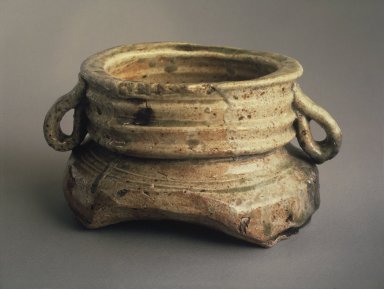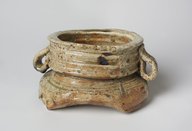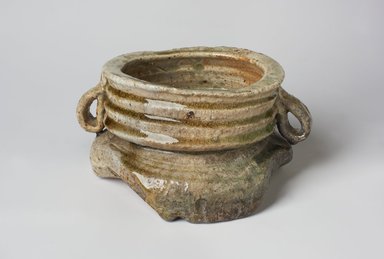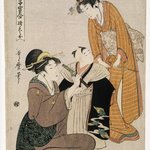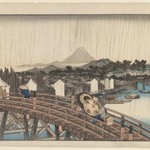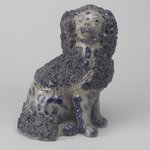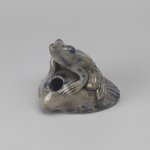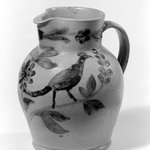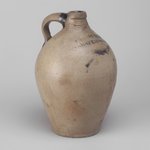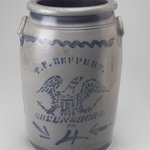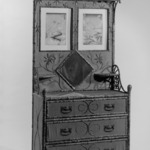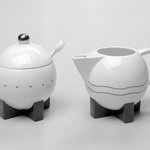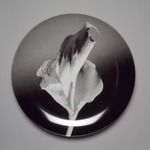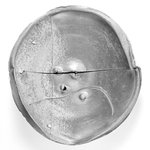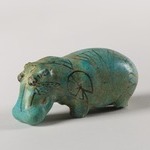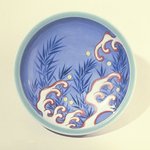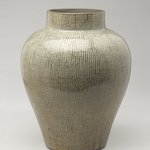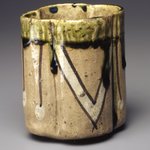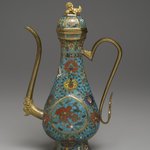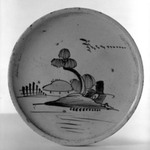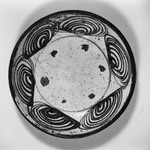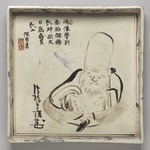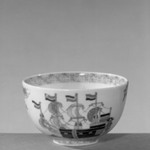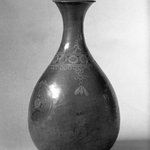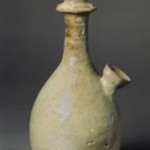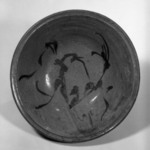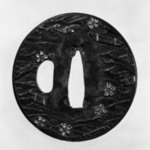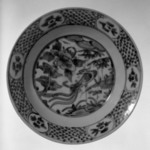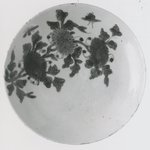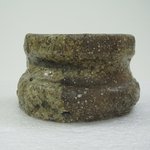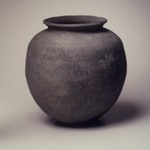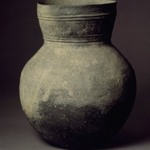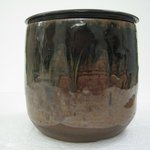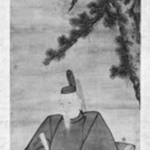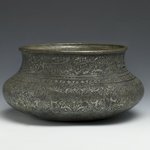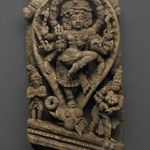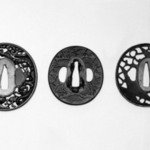Tea Ceremony Fresh Water Jar (Mizusashi)
Asian Art
The brief Momoyama period (1573–1615) was a golden age for ceramic innovation in Japan, as potters responded to a surge in demand for tea wares. The mizusashi, a lidded pot containing clean water for making tea and rinsing cups, is the first vessel to be brought into the place where a tea ceremony is being held, and as such it attracts a great deal of attention from participants. Some mizusashi have ceramic lids while others have lacquered wood lids, as was likely the case with this object. The light-green coating of natural ash glaze, small scorch marks, and prominent “ear” handles of this piece typify tea wares made at the kilns of Iga, a mountainous area southeast of Kyōto.
MEDIUM
Stoneware with ash glaze; Iga ware
Lid in lacquered wood
DATES
late 16th–early 17th century
PERIOD
Momoyama Period to Edo Period
INSCRIPTIONS
Inscription on storage box lid refers to the piece as an early Shigaraki waste water jar. Paper label on side of box refers to it as an Iga Mukogire Mizusashi.
ACCESSION NUMBER
80.42.2a-b
CREDIT LINE
Gift of Mr. and Mrs. Harry Kahn
MUSEUM LOCATION
This item is not on view
CAPTION
Tea Ceremony Fresh Water Jar (Mizusashi), late 16th–early 17th century. Stoneware with ash glaze; Iga ware
Lid in lacquered wood, 4 1/8 x 6 1/2 in. (10.5 x 16.5 cm). Brooklyn Museum, Gift of Mr. and Mrs. Harry Kahn, 80.42.2a-b. Creative Commons-BY (Photo: Brooklyn Museum, 80.42.2_view1_PS11.jpg)
IMAGE
overall, 80.42.2_view1_PS11.jpg. Brooklyn Museum photograph, 2016
"CUR" at the beginning of an image file name means that the image was created by a curatorial staff member. These study images may be digital point-and-shoot photographs, when we don\'t yet have high-quality studio photography, or they may be scans of older negatives, slides, or photographic prints, providing historical documentation of the object.
RIGHTS STATEMENT
Creative Commons-BY
You may download and use Brooklyn Museum images of this three-dimensional work in accordance with a
Creative Commons license. Fair use, as understood under the United States Copyright Act, may also apply.
Please include caption information from this page and credit the Brooklyn Museum. If you need a high resolution file, please fill out our online
application form (charges apply).
For further information about copyright, we recommend resources at the
United States Library of Congress,
Cornell University,
Copyright and Cultural Institutions: Guidelines for U.S. Libraries, Archives, and Museums, and
Copyright Watch.
For more information about the Museum's rights project, including how rights types are assigned, please see our
blog posts on copyright.
If you have any information regarding this work and rights to it, please contact
copyright@brooklynmuseum.org.
RECORD COMPLETENESS
Not every record you will find here is complete. More information is available for some works than for others, and some entries have been updated more recently. Records are frequently reviewed and revised, and
we welcome any additional information you might have.


